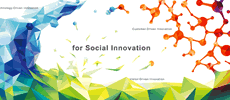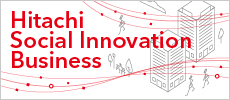Collaborative Creation Using SF Prototyping for Railway Maintenance DX
Highlight
As Japan’s workforce continues to shrink, finding the people needed to perform maintenance and other operational work has become a major challenge for the railway industry. Essential to making their businesses more sustainable will be to undertake working style reforms after first gaining an understanding of the values held by their workforce as well as their current issues and future hopes for working practices.
Hitachi has developed an “SF prototyping” methodology that works by having people talk about visions of possible futures that are drawn from the creativity of SF and then backcasting what technologies these will require and using this in their business. In a co-creation with Tokyo Metro Co., Ltd. aimed at the digital transformation of railway maintenance, Hitachi has used SF prototyping to envisage future working practices in the age of AI and to devise a roadmap for achieving them.
This article describes the process of co-creation using SF prototyping and the outcomes achieved.
1. Introduction
The ongoing shrinkage of the working population of Japan is posing challenges for society in a wide range of industries. In railways in particular, finding the people needed to perform maintenance and other operational work has become a major challenge for the industry due to the rise in employee turnover among younger staff and the falling number of applicants per job. In its efforts to overcome these challenges, Tokyo Metro Co., Ltd. is among those taking steps to change working practices and engage in working style reform.
For working style reforms that include workplace changes to be effective, it is essential to gain an understanding of the issues that the workforce, including younger employees, have with current working practices, what their hopes are for future practices, and the values that they hold. This in turn calls for workable methodologies and processes capable of getting frontline staff to express their true opinions and that can go beyond existing demarcations to draw out any ideas they have for the future.
The Design Center at the Research & Development Group of Hitachi, Ltd. has developed a methodology it calls “science fiction (SF) prototyping.” This works by having people talk about possible futures that are drawn from the creativity of SF and then backcasting what technologies these will require and using this in their business (see Figure 1). SF prototyping involves making up “prototype stories” that envision a future that does not yet exist but rather is based on ideas from SF, and then discussing and sharing this vision with others(1). The methodology can be used in solution development or policy evaluation as the prototypes serve as a means of encouraging lateral thinking among stakeholders. They provide a means of eliciting what survey participants see as being the real issues, the values they hold, and their opinions about these future scenarios, doing so in a way that is not tied to the company’s existing culture and practices.
This article describes a co-creation process in which SF prototyping was applied to the digital transformation (DX) of railway maintenance and used to get frontline staff to express their true opinions and to go beyond existing demarcations to draw out ideas they have for the future. This involved working with the Electrical Facilities Department at Tokyo Metro to formulate a vision for future working style reform and a roadmap for achieving it.
Figure 1—Overview of SF Prototyping 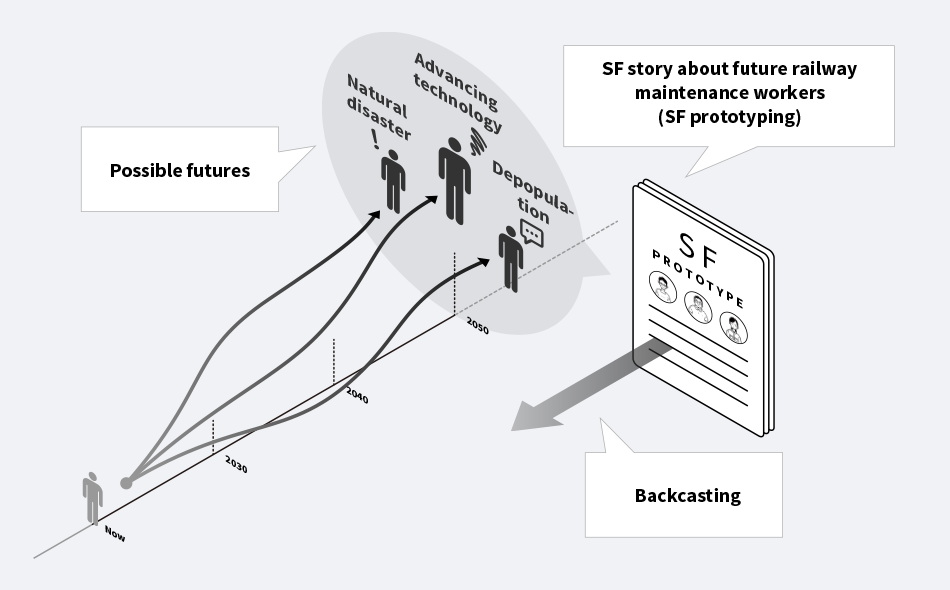 SF: science fictionSF prototyping is a way to use SF stories about the future to anticipate the impact of societal problems as well as science and technology, and to talk about future issues and people’s values.
SF: science fictionSF prototyping is a way to use SF stories about the future to anticipate the impact of societal problems as well as science and technology, and to talk about future issues and people’s values.
2. Collaborative Creation Using SF Prototyping
The co-creation process comprised interviews where SF prototyping was used to ask people about their values and their feelings regarding working practice issues (Phase 1) and co-creation workshops for considering future maintenance work scenarios that drew on the Phase 1 results (Phase 2) (see Figure 2).
Figure 2—Collaborative Creation Process Using SF Prototyping After first using SF prototyping to elicit the interview subjects’ values and issues, workshops were held to come up with future working practice scenarios and solution ideas.
After first using SF prototyping to elicit the interview subjects’ values and issues, workshops were held to come up with future working practice scenarios and solution ideas.
2.1 Interviews Conducted Using SF Prototyping (Phase 1)
(1) Interviews
The study interviewed eight young employees from the Electrical Facilities Department at Tokyo Metro who were experienced in equipment maintenance work. The interviews sought to understand their values and to elicit the issues they had with current working practices in the department and how they would like to work in the future. Prior to this, Hitachi had shared an SF story it had created about railway maintenance workers and asked what they thought of it. The story was set at a fictional railway operations business in 2050 (see Figure 3). The interview questions were then designed based on these opinions and the interviews conducted in a semi-structured manner over a period of about 60 to 90 minutes. Interviews were also conducted with three managers to clarify the background to the maintenance work issues raised by the young employees and how their values differed from those of management.
(2) Results
The results indicated that, as well as facilitating the free expression of opinions about the fictional railway workers depicted in the SF story and the ways in which they worked, this approach identified not only those issues that currently concern the workers, but also those that posed an obstacle when imagining future maintenance work. Furthermore, exposing the interview subjects to the opinions of fictional characters prompted comments that shed light on the subjects’ values, depending on whether they felt empathy or antipathy toward them. The following is a collation of the results.
The passing on of workplace expertise was one of the work issues that came up. This was identified as an issue for a number of reasons. These included how duties such as administration and measures for dealing with accidents are increasing manager workloads and leaving them with little time for skills transfer, and also how the task of keeping expertise in specific equipment up to date in instruction manuals imposes a heavy burden on staff, coming on top of their other routine duties. A number of other issues were also raised, such as how hard it is for workers to acquire work knowledge on their own because of the difficulty of finding equipment documentation such as specifications and drawings.
An organizational issue that came to light was the desire expressed by workers to know how their own work fits into the overall workflow so that they are able to appreciate the background and purpose of what they are doing. As the job increasingly involves a diverse range of machinery, another concern was how workers are likely to find themselves in a difficult situation when dealing with complex equipment faults unless there are measures in place for training specialists who handle specific types of equipment.
Finally, the interviews highlighted a gap between the values held by management and those held by some of the young workers. The purpose of railway operations is to deliver passengers safely to their destinations. Whereas management emphasized being motivated by involvement in such vital work, rather than placing any great importance on this sort of motivation, the young workers instead put more weight on knowing the reasons and purpose of the work they are engaged in.
Figure 3—SF Story Used in Study The SF story is set at a railway operations business in 2050 and tells a story in interview form of three railway maintenance workers who have different values.
The SF story is set at a railway operations business in 2050 and tells a story in interview form of three railway maintenance workers who have different values.
2.2 Co-creation Workshops for Exploring Possible Future Working Practices (Phase 2)
(1) Workshops
To create a vision for future maintenance working practices from the views expressed by the young workers, as well as a roadmap for achieving them, a number of co-creation workshops were held using the NEXPERIENCE(2) methodology with participation by seven young employees with experience in equipment maintenance work. The workshops used the NEXPERIENCE/Service Ideation*1 technique for generating ideas together with tools prepared by Hitachi [service pattern cards*2 and artificial intelligence (AI) use pattern cards*3] to come up with solution ideas for the working practice issues identified in Phase 1. To formulate the vision of future working practices and the roadmap for achieving them, these solution ideas were then collated based on how they related to one another and their sequencing.
(2) Results
In the Phase 2 co-creation workshops, the SF prototyping conducted in Phase 1 was used to prompt thoughts and suggestions by backcasting from the future and to come up with ideas that reflect the views of frontline employees (see Figure 4). This was then used to formulate scenarios for future working practices and a roadmap for achieving them (see Figure 5). The discussion then moved on to the measures needed to lay the ground for solution deployment. In addition to DX, these also included changes to the design of company practices required for actual operations. This delivered outcomes that could be put to work in future solution development, including many actions that Tokyo Metro would likely need to take in the future. The following is a collation of these results.
One of the many ideas from the workshops dealt with skills development support for specialists and the work of frontline workers. Given that the volume and diversity of equipment used in railway operations is likely to increase in the future, the workshops came up with ideas for instruction manual standardization and digitalization involving the creation of instruction manuals and the passing on of workplace expertise by making these available to frontline workers and using them to look up information. By doing so, those workers who lack expertise and experience will be able to refer to these instruction manuals as they do their work. One suggestion was that this could be facilitated by support tools that make it simpler to collate such instruction manuals.
Another idea involved working with AI. It imagined a future in which AI could be applied to accumulated instruction manual data and know-how and used as a support tool for things like skills transfer and preventing human error. One comment was that, “The AI should be able to respond to even vaguely worded questions when I come up against something I am unfamiliar with in my work. This is something I would like right now.” It was also suggested that it would be seen as a useful support tool not only by younger workers, but also by more experienced staff. It was from these ideas that a vision was formulated for future working practices in which, by giving everyone access to know-how and knowledge, workers could work under their own auspices and by doing so become specialists.
Another suggestion for future working practices was to make the company into a place where people want to keep working because their duties match their skills and because they are given fair recognition for their efforts. So enable workers to continue working in an environment where their motivations and values are increasingly diverse, another idea that was suggested was for the visualization of workflows to allow workers to see where their own role fits into the wider picture. Yet another idea was having transparency in work, outcomes, and feedback as a means of evaluating outcomes and attitudes to working practices. Numerous other ideas were also raised, such as presenting capabilities in the form of a skills map and the use of personality analysis to match work to workers’ individual characteristics. Comments on this included that it would allow workers to feel a greater sense of ownership of their work and facilitate a proactive approach to personnel transfers.
What became clear from this process of generating ideas, coming up with scenarios for future working practices, and devising a roadmap for achieving them was that it would require not only the application of DX to workplace tasks, such as “instruction manual standardization and digitalization,” but also improvements to the organization and its systems such as “transparency in work, outcomes, and feedback.”
- *1
- A methodology and framework for devising service ideas that explores ideas through an overview of value, issues, and products and technologies.
- *2
- Cards showing characteristic examples of services from Hitachi and elsewhere for the purpose of coming up with innovative service ideas.
- *3
- Cards showing characteristic examples of AI use at Hitachi for the purpose of using AI to actualize service ideas.
Figure 4—Example Solution Ideas from Workshop 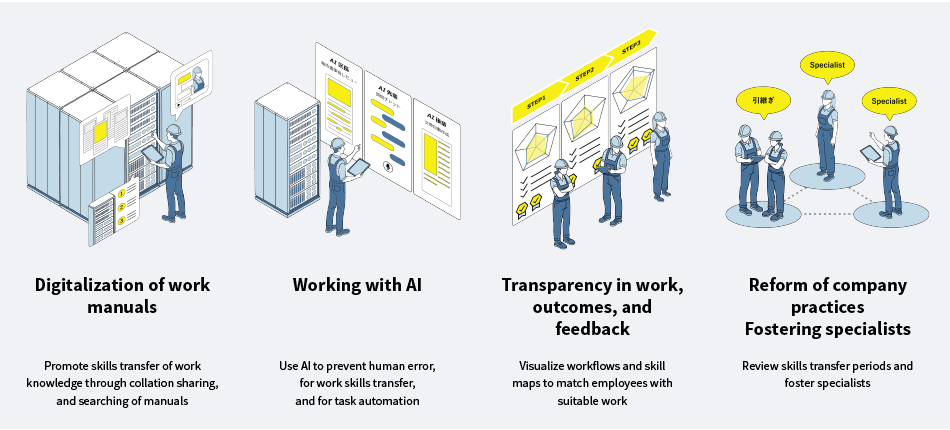 The figure illustrates solution ideas that the participants came up with at the workshop.
The figure illustrates solution ideas that the participants came up with at the workshop.
Figure 5—Scenarios for Future Working Practices Devised at Workshop and Roadmap for Achievement 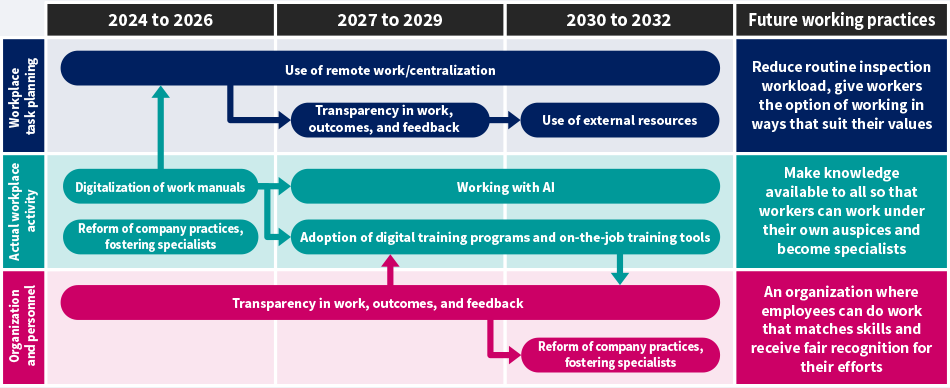 The roadmap is formulated by arranging the solution ideas and future working practice scenarios from the workshops into three layers: workplace task planning, actual workplace activity, and organization and personnel.
The roadmap is formulated by arranging the solution ideas and future working practice scenarios from the workshops into three layers: workplace task planning, actual workplace activity, and organization and personnel.
3. Conclusions
In addition to ongoing co-creation with Tokyo Metro involving work on practical solutions for realizing scenarios for future working practices, Hitachi also intends to keep searching for ways of deploying technologies suited to the people who work at Tokyo Metro, its corporate culture, and its organizational characteristics. Hitachi believes that the co-creation process incorporating SF prototyping that was used on this project can not only identify and provide a depth of understanding about the diverse and complex challenges that exist at different companies, but can also help it work in partnership with frontline employees to explore the solutions that will be needed in the future. Hitachi has plans to further develop the methodology and to utilize it for DX at a wide range of companies, not only railway operators, to help them to increase worker motivation, improve their organizational environment, and introduce efficient working practices.
REFERENCES
- 1)
- D. Miyamoto et al, “SF Prototyping: A New Strategy Using SF to Drive Innovation,” Hayakawa Publishing Corporation (Jun. 2021)
- 2)
- Hitachi, Ltd. “NEXPERIENCE”

